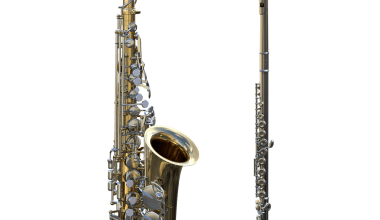Have you ever wondered why your music files end in .mp3, .wav, or .flac? These are audio file extensions that tell us the type of audio file we’re using. Think of them like labels that explain how the file works and where you can use it. If you’re a music lover, an artist, or someone curious about audio, this guide will make everything clear and simple.
What Are Audio File Extensions?
An audio file extension is a small piece of text that comes after the file name, like .mp3 in “song.mp3.” It helps your computer or phone understand the file. For example:
.mp3tells your device it’s a music file that plays on most apps..wavmeans it’s a high-quality sound file, often used in music studios.
These extensions are important because they affect the file’s sound quality, size, and compatibility (where you can play them).
Why Do Audio File Extensions Matter?
Imagine recording a song. You want it to sound perfect in a studio, play smoothly on your phone, and not take up too much storage. The file format you choose can make or break this. Here’s why it matters:
- Sound Quality: Some formats give clear, professional sound.
- File Size: Compressed formats like MP3 are smaller and save space.
- Device Support: Not all formats work on every gadget.
By the end of this guide, you’ll know which format is perfect for your needs.
Types of Audio File Formats
Let’s break it down into three simple types:
1. Uncompressed Audio
These formats don’t lose any details. The sound is crystal clear but the files are very large.
- WAV (.wav): A favorite in music studios. It keeps all the sound details but takes up a lot of space.
- AIFF (.aiff): Apple’s version of WAV, used on Macs and iPhones.
2. Lossless Audio
These files are smaller than uncompressed ones but still sound amazing. Perfect for music lovers.
- FLAC (.flac): Loved by audiophiles for its excellent quality. Works on most devices.
- ALAC (.m4a): Great for Apple users. It saves space without losing sound quality.
3. Lossy Audio
These formats shrink file sizes by cutting some sound details. They’re not as perfect as the other two types, but they work well for streaming and sharing.
- MP3 (.mp3): The most common format. Small, light, and works everywhere.
- AAC (.aac): Offers better sound than MP3 at the same size. Used in iTunes and YouTube.
- OGG (.ogg): Open-source and used by Spotify.
Easy-to-Use Audio File Extensions List
Here’s a simple list of popular audio file extensions:
| Format | Type | Best For | Drawbacks |
|---|---|---|---|
| WAV | Uncompressed | Studio recordings, high-quality sound | Very large file size |
| AIFF | Uncompressed | Apple users, high-quality recordings | Large size, limited compatibility |
| FLAC | Lossless | Audiophiles, music collections | Not supported on older devices |
| ALAC | Lossless | Apple users, space-saving | Limited to Apple products |
| MP3 | Lossy | Streaming, sharing | Loss in sound quality |
| AAC | Lossy | YouTube, iTunes | Still lossy despite good quality |
| OGG | Lossy | Open-source, Spotify | Limited compatibility |
Choosing the Right Audio Format for You
Let’s make this easy. Ask yourself:
1. What do you need it for?
- Editing music: Use WAV or AIFF.
- Saving space: Go for MP3 or AAC.
- Streaming music: OGG and AAC are great options.
2. What’s your priority?
- High quality: Choose FLAC or ALAC.
- Small size: MP3 is your friend.
3. What device are you using?
- Apple gadgets? Stick to ALAC or AAC.
- Android or Windows? FLAC and MP3 work best.
Everyday Uses of Audio File Formats
Here are some common scenarios and the best formats to use:
For Musicians and Producers
- Use WAV or AIFF for recording and editing.
- Convert to MP3 or AAC for sharing your work online.
For Streaming
- Platforms like Spotify use OGG, while YouTube prefers AAC.
For Music Lovers
- Save your songs in FLAC for the best listening experience.
How to Convert Between Formats
You don’t need to stick to one format forever. Tools like Audacity, Adobe Audition, or free online converters can help you switch formats. For example:
- Convert WAV to MP3 for smaller sizes.
- Change MP3 to FLAC if you want better sound quality (though it won’t restore lost details).
Emerging Trends in Audio File Extensions
1. 3D and Spatial Audio
With VR and AR becoming popular, new formats like Dolby Atmos are making sound more immersive.
2. Streaming-Specific Formats
Ultra-light formats are being developed for smoother streaming, even on slow networks.
Fun Facts About Audio Files
- Did you know that MP3 was invented in the 1990s to save space on CDs?
- FLAC can compress a song by 50% without losing quality.
- WAV files can store extra data like album art or notes.
Frequently Asked Questions (FAQs)
Q1. What is the most common audio file format?
Answer: MP3 is the most popular because it works on almost all devices and takes up little space.
Q2. Can I convert MP3 to FLAC for better quality?
Answer: No, converting won’t bring back the lost details. Always keep a high-quality master file.
Q3. What format is best for storing music?
Answer: FLAC is great for audiophiles, while ALAC works well for Apple users.
Wrapping Up
Audio file extensions may seem technical, but they’re just tools to help your music sound its best. From high-quality WAV files for professionals to compact MP3s for casual listeners, there’s a format for everyone. Now that you’ve mastered the basics, you’re ready to choose the right format for your needs!
Remember, whether you’re an artist or just love music, understanding audio formats makes all the difference. Have fun exploring the world of sound!
Related Articles:
For further reading, explore these related articles:
- Unlocking the Joy of Prime Music Subscription: Your Ultimate Guide
- What Does “In Review” Mean in the Music Industry?
For additional resources on music marketing and distribution, visit Deliver My Tune.






